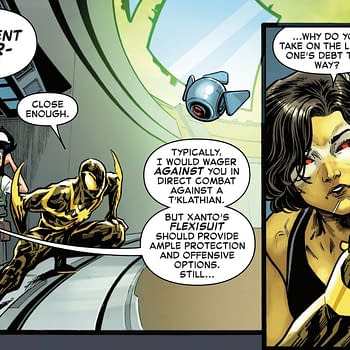Posted in: Comics, Recent Updates | Tagged: Ben Katchor, Brooklyn Book Festival, Hand Drying in America, Letting it Go, Lisa Hanawalt, Miriam Katin, My Dirty Dumb Eyes, Today is the Last Day of the Rest of Your Life, Ulli Lust
"I Look At Myself Like A Stranger" – Ben Katchor, Miriam Katin, Ulli Lust, Lisa Hanawalt at the Brooklyn Book Festival

The panel's official title was unofficially changed to "Ghost Writing Yourself" by moderator Anne Ishii, suggesting the role of the artist storyteller as openly present or more subtly present in their own works. Just a brief glimpse of slides from each of the cartoonists' works revealed a broad range of visual styles, but also content, with Katin, Lust, and Hanawalt including versions of themselves in the narrative, while Katchor took a more observational role. To be clear, though, Katin's Letting It Go includes a somewhat representational version of herself as a character, while Lust includes a character called Ulli, and Hanawalt presents an animal version of herself. It seemed like a full spectrum of semi-autobio approaches.

Katin's relationship with the cities she depicts is equally personal. The city of Berlin takes on a prime role in her narrative as a place of great suffering and resentment due to her experiences fleeing the Nazis in Europe. She's had "so many different homelands", from Berlin to Budapest, Israel, and New York, that they all form part of her narrative. "I was trying to deal with this fact", she said, that Berlin still had a place in her life, but she "never thought she would have to deal with it" since it was better to forget. In Letting It Go, her character is forced to confront her feelings about Berlin because her son wants to live and work there, stirring up long dormant emotions. When readying the book for publication, she explained, her Hungarian publisher was surprised that she was "holding onto this terror" of Berlin and commented on it. For Katin, identity in her works is very much a question of facing the role of places in your life.
Ishii questioned Lust about the predominantly negative view of Italy presented in her newest graphic novel that features young people on a road trip, and whether she associated "geography" with "sexual trauma". Lust laughed at the question in a lighthearted way and clarified that for her, the story is "about teenagers who want to enjoy their lives. It's not a "sex story"' as many seem to think due to its violent and erotic content. It is, however, about a "clash of two cultures" between different types of young women, and it engages with an imbalance in gender within society. "Name any country where you have no balanced gender society and you will have the same", Lust said, clarifying that the book is not specifically about gender inequalities in Italy, but worldwide.

When the panelists got into conversations with each other, they had their own amusing observations about cartooning to offer. Katin, the first time she met Katchor, couldn't see his name tag because he was holding a sandwich in front of it. But still, she felt he looked incredibly familiar and started talking to him. When he moved his sandwich and she saw his name, she was awe struck, but observed, "This is why I thought I knew him, because he looked like his work". Katin and Katchor agreed that if you walk into a room of cartoonists, you can usually tell who is who if you are familiar with their art styles, since there is something about them that resembles their work, even if they don't create autobiographical comics.
Lust's take on depicting herself is pragmatic. She recognizes that
even figures who are not meant to depict the artist look a little like the artist in many works because you are "inside your own image", but for that reason, she often finds herself making her own character "a bit more pretty" because she has to draw 200 pages of herself and it's a relief to do so. Her theory of self-representation, though, is quite circumspect. "I look at myself like a stranger", she said, " I try to keep that distance to not be too shy to tell stories that I'm not comfortable with. I don't have to respect my own private issues". She finds it "comforting" to present herself as a leading figure because less research is required, for one thing.

So if you're wondering what kind of cocktail of influences and choices makes for a standout comics artist, the primacy of personal choice seems to be the way to go. For these panelists, doing it any other way simply wasn't appealing or likely.
Hannah Means-Shannon is senior New York Correspondent at Bleeding Cool, writes and blogs about comics for TRIP CITY and Sequart.org, and is currently working on books about Neil Gaiman and Alan Moore for Sequart. She is @hannahmenzies on Twitter and hannahmenziesblog on WordPress. Find her bio here.















